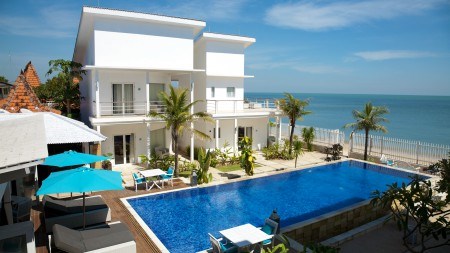Home buyers all over the world are increasingly opting for smaller homes packed with energy-saving equipment, luxury finishes and state-of-the-art technology.
Modern lifestyles combined with the tough economic conditions of the past few years have brought about significant changes in the SA property market, especially with regard to the size of homes and stands. The latest FNB Property Barometer reveals, for example, that the size of residential stands in new developments, which averaged 1 000m2 between 1970 and 1974, has shrunk sharply to just over 500m2 since 2010.
At the same time, the average size of the homes being built on those stands has dropped from the 1970–’74 average of 203m2 to 146m2 in the past two years and is still on a declining trend, while new sectional-title units now average only about 90m2 compared with 130m2 at the end of 2004. What is more, the FNB stats show that only 11,5% of new homes being built today have staff quarters and only 9,1% have a swimming pool. And since 2010, even garages have begun to be shed, with only about half (51,6%) of the new homes now having even a single lock-up garage as standard.
Meanwhile, says Lanice Steward, MD of Cape agency Anne Porter Knight Frank, there has been a noticeable drop in the number of four- bedroom homes being built (the McMansions of the boom years) and an increase in two-bedroom homes – a trend that is no doubt being fuelled by the rising costs of home ownership and the determination of many empty-nesters to downscale to smaller, more secure and more manageable properties that don’t have rooms they never use.
And SA is not alone in this experience. Statistics from all over the world show that current buyer preferences across the age spectrum are tending towards smaller homes, and not just because that’s all that’s available or all they can afford. Many people are very serious now about lowering their carbon footprint by buying homes that consume fewer resources to build and take less energy to run, while others are realising that if they have less house, they can have more home – that is, more luxury features.
A recent study by the National Association of Homebuilders (NAHB) in the US, for example, found that by 2015, the average new home would not only be at least 10% smaller than now, but also much ‘greener’, more packed with technology and more suited to the smaller modern family unit.
The NAHB acknowledges that the economic downturn has accelerated the trend, with smaller homes obviously costing less to build, buy and maintain. Most of today’s consumers, it notes, are also very focused on keeping utility costs down and, because home-price growth is slow, lack the equity to upgrade to bigger homes. However, it says, they might not want to anyway, since the average family size is shrinking and changing lifestyles mean a growing preference for convenience over space. In line with this, the NAHB predicts that the exclusive lounge or living room will increasingly either merge with a family room/great room including a kitchen area, or become a smaller study/library or music room. And although SA does not exactly follow the uS market, a similar trend is emerging in new developments here, with more space often taking a back seat now to‘green’ features such as solar geysers, water-saving measures and energy-efficient appliances. In short, function is rapidly becoming at least as important as form, which is a major shift for house-proud South Africans and one that potential home sellers should note.
As for home buyers, says Berry Everitt, MD of the Chas Everitt International Property group, those purchasing ‘off-plan’ now should make sure that their new property will be fully wired for modern communications, entertainment and security systems while it is under construction.
“In this age of home computers, satellite TV and Internet-capable fridges, this is just as important as specifying the right carpets, tiles and countertops. It will eliminate the need for duplicate equipment, complex hook-ups and trailing extensions in your new home, not to mention the disruption and inconvenience of having additional wiring installed later on.”
Items to consider, suggests Berry Everitt, include:
- additional plug points for computers, home-theatre systems and kitchen appliances;
- a‘clean’ power supply for your home computers;
- additional TV aerial connections where you want them;
- a multiple-outlet satellite TV connection;
- additional, wired-in speakers for a music system; and
- wiring for your security system’s movement sensors, panic buttons and perhaps even closed-circuit door or gate cameras.
Taking this thought further, Adrian Goslett, CEO of RE/MAX of Southern Africa, suggests that the next logical step will be the ‘smart’ home that is fully computer controlled or, even more likely, remotely smartphone controlled.
“With network connections and rapid advances in technologies able to transform our daily lives, it seems that the next trend will be homes where many of these technologies are integrated to allow the homeowner to access and control various household appliances and other automated features via a broadband connection. Automated tasks could include anything from the regulation of the home’s air-conditioning system to unlocking the door.”
He admits that the cost of creating a smart home is currently too high for most home buyers, but predicts that it will not be long before the necessary technologies are being produced more cheaply and the vision thus becomes more accessible. To read more about property trends, please go to www.junction.co.za



